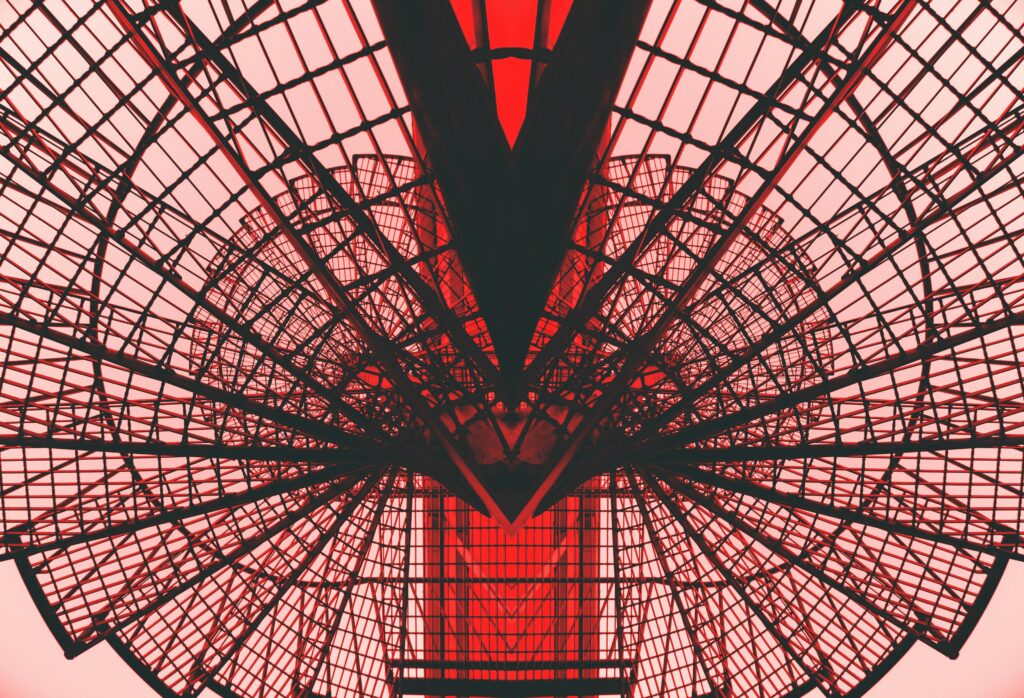
Introduction
Abstract photography is where reality dissolves into emotion, color, and pure visual imagination. Unlike traditional genres, it doesn’t simply capture the world as it appears. Instead, it transforms the ordinary—patterns, textures, shapes, and light—into extraordinary visuals that spark curiosity and invite interpretation.
But what really sets abstract photography apart?
It’s often misunderstood as “non-representational,” a term more common in painting than photography. The key difference is this:
- Abstract art distorts, simplifies, or exaggerates elements from the real world, using them to create a new visual experience. There’s often a “root” in reality—a texture, color, or shape that’s been creatively transformed.
- Non-representational (or pure non-objective) art is entirely disconnected from recognizable subjects. It presents form, color, or pattern without any reference to the visible world. Think of artists like Jackson Pollock—frequently (but mistakenly) called “abstract” when in fact his work was non-representational, offering no direct tie to objects or scenes.
In photography, true non-representational images are rare, because even the most experimental shots typically begin with something from the real world. Abstract photography, then, lives in the fascinating space between representation and pure invention—where the ordinary is reimagined but not fully erased.
Why do creatives and viewers love abstract photography?
- Limitless creativity: There are no strict rules—just your unique vision.
- Universal access: Anyone can create abstracts, whether with a smartphone or a DSLR.
- Everyday inspiration: The world around you becomes raw material for visual experiments.
- Emotional connection: Abstracts invite personal interpretation and deeper engagement.
This guide is your key to unlocking that creative freedom. You’ll find hands-on techniques, inspiring prompts, gear recommendations, editing tips, and even ways to turn your art into income. Whether you’re a seasoned artist, a curious beginner, or looking for new portfolio ideas, this is your gateway to abstract photography.
Ready to see the world with new eyes? Let’s dive in.
What is Abstract Photography?
Definition & Differences
Abstract photography is the art of using a camera to emphasize visual elements—form, color, texture, line, and pattern—over literal subject matter. Instead of documenting a recognizable scene or object, abstract photographs highlight the essence or impression of reality, often transforming the ordinary into something extraordinary or unrecognizable.
- Form: Abstract photography focuses on shapes, curves, angles, and the interplay between positive and negative space.
- Color: Bold hues, subtle gradients, or striking contrasts become the subject themselves, drawing the viewer’s eye.
- Texture: Surfaces—smooth, rough, glossy, or matte—are exaggerated to invite a tactile response, even in a two-dimensional photo.
How does abstract photography differ from other genres?
- Portrait/Landscape Photography: These genres tell a story or showcase a subject; abstract photography evokes a feeling or mood.
- Street/Documentary Photography: Aim to capture real-life moments and realities; abstract photography reimagines or distills reality, often removing context and narrative altogether.
- Non-representational vs. Abstract:
- Abstract art usually starts with something real, which is then simplified, distorted, or transformed.
- Non-representational (non-objective) art is pure form, color, and pattern, with no basis in physical reality. In photography, true non-representational images are extremely rare since the camera always begins with something in the world—even if it’s blurred, zoomed, or manipulated beyond recognition.
For example: While many call Jackson Pollock’s work “abstract,” it is more accurately described as non-representational because it lacks any real-world reference. In photography, even the most experimental images usually retain some faint connection to their original subject.
A Brief History of Abstract Photography
- Early 1900s:
The movement began alongside modern art movements like Surrealism and Cubism. Innovators like Man Ray pioneered cameraless images—photograms (or “Rayographs”)—by placing objects directly on photosensitive paper and exposing them to light, creating pure shapes and forms. - Mid-20th Century:
Visionaries like László Moholy-Nagy pushed boundaries by experimenting with light, shadow, and perspective. Photographers began to see the camera as a tool for creating art, not just documentation. - Late 20th Century to Modern Era:
Advances in film, color processing, and especially digital tools (Photoshop, Lightroom) opened new doors for abstraction. Techniques like Intentional Camera Movement (ICM), long exposure, and in-camera multiple exposures became popular. The digital revolution also made it easier to manipulate images and push abstraction further than ever before. - Today:
Abstract photography thrives both as an artistic pursuit and a creative outlet for beginners and professionals alike. With smartphones and editing apps, anyone can experiment with turning reality into something new and visually striking.
In summary:
Abstract photography lives at the intersection of reality and imagination—transforming what we see into how we feel, and blurring the line between subject and sensation.
Abstract Photography Techniques
In-Camera Techniques
1. Motion Blur & Intentional Camera Movement (ICM)
- How: Use slow shutter speeds (1/15s or slower) and physically move the camera (panning, tilting, or rotating) during the exposure. Experiment with both handheld and tripod setups for different effects.
- Pro Tip: Use a tripod with a remote shutter release for more control, or go handheld for wilder, less predictable results.
- Best Subjects: City lights at night, flowing water, trees in the wind, moving crowds.
- Gear Tip: Consider a sturdy tripod like the Neewer Carbon Fiber Tripod for shake-free long exposures.
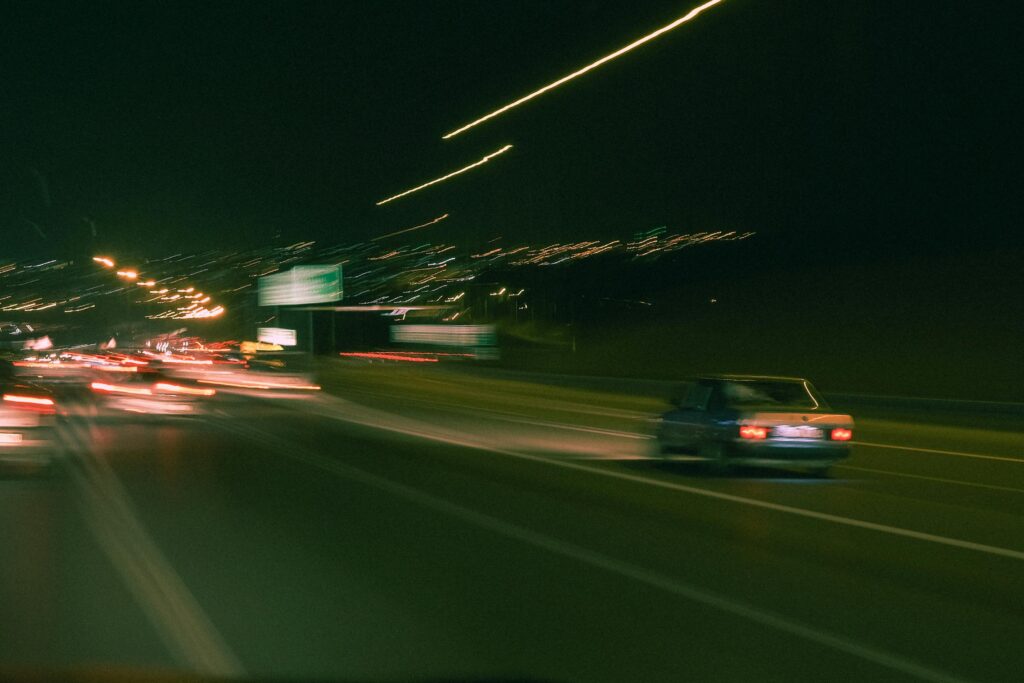
2. Bokeh (Out-of-Focus Abstraction)
- How: Shoot with wide apertures (f/2.8 or lower) and focus on distant or point light sources to create creamy, out-of-focus circles and shapes.
- Best Gear: Fast prime lenses such as the Canon 50mm f/1.8 STM or Sony 85mm f/1.8.
- Creative Idea: Use holiday lights, reflections, or shiny surfaces for vibrant bokeh backgrounds. Try placing colored gels over lights for unique hues.
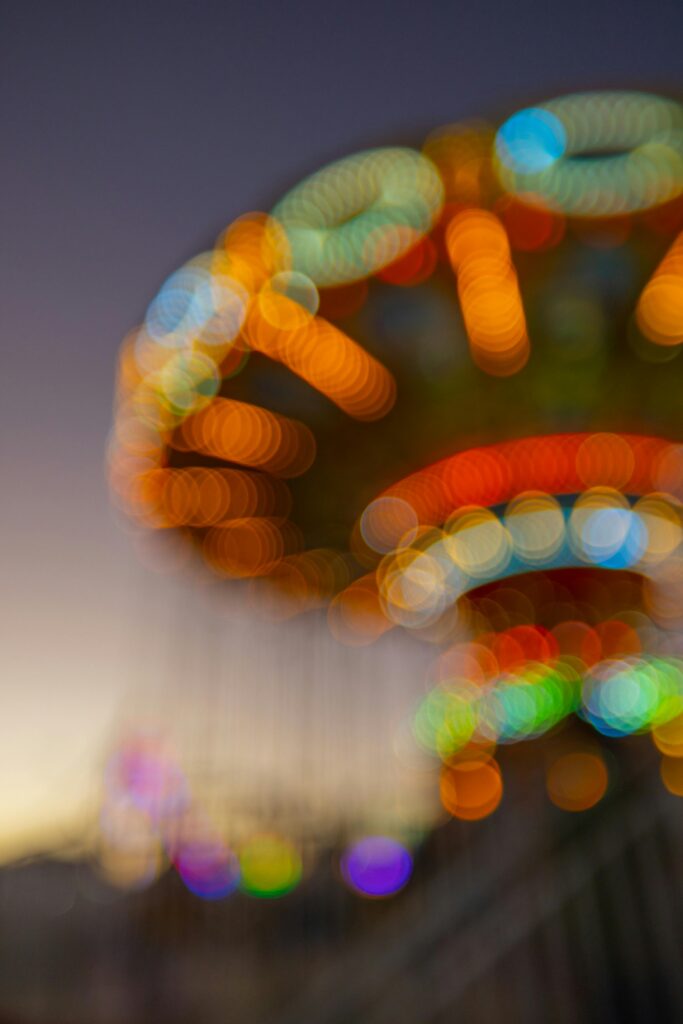
3. Macro Abstraction
- How: Get close—really close—to everyday objects like water droplets, peeling paint, fabrics, or food. Use a macro lens to capture textures, patterns, and fine details invisible to the naked eye.
- Editor’s Pick: Canon 100mm f/2.8 Macro Lens | Check prices on KEH | Amazon.
- Budget Tip: Clip-on macro lenses for smartphones can yield surprising results for beginners.
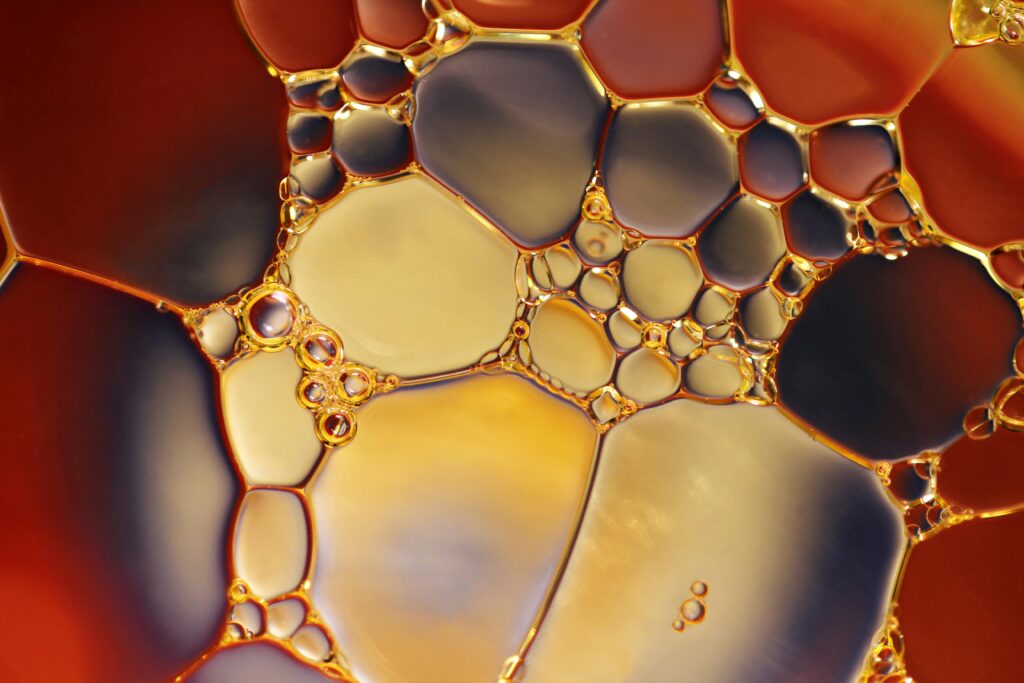
4. Reflections & Surfaces
- How: Use glass, water, mirrors, or even smartphone screens to create layered, distorted reflections and surreal compositions.
- Pro Tip: Look for puddles after rain, or try shooting through textured glass for instant abstraction.
- Gear: Polarizing filters help control glare and enhance colors.

5. Double Exposure & In-Camera Effects
- How: Use your camera’s multiple exposure mode (or layer images in post) to blend two or more scenes into a single surreal composition.
- Creative Uses: Overlay organic textures (leaves, clouds) onto urban or portrait shots.
- Recommended Gear: Most modern DSLRs and mirrorless cameras offer a multiple exposure setting; check your manual for instructions.
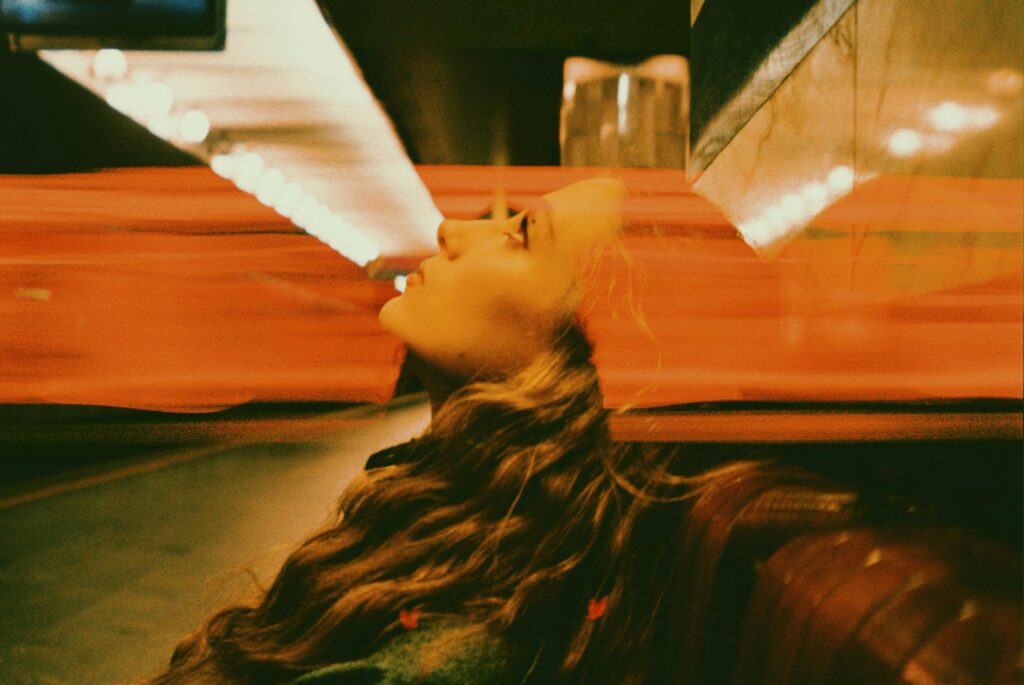
6. Minimalism & Negative Space
- How: Focus on a single shape, color, or pattern with a clean background. Use negative space to give the subject room to “breathe.”
- Creative Idea: Look for lone objects against plain walls or sky, shadows on white surfaces, or isolated splashes of color.
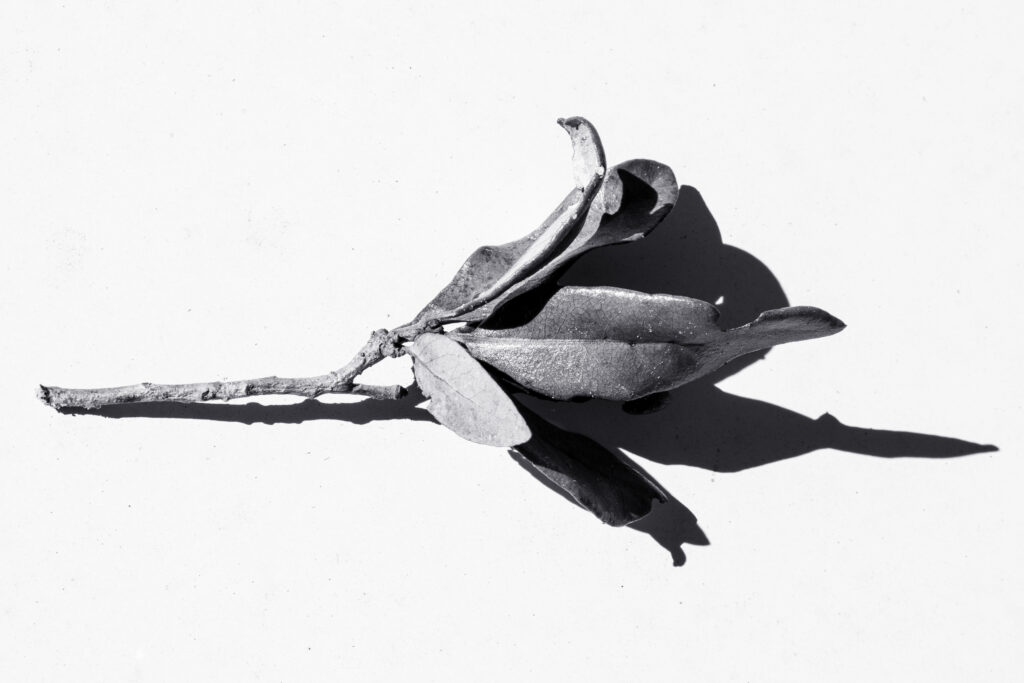
TIP:
Most of these techniques can be combined for even more experimental results—try motion blur with reflections, or macro with double exposure. Abstract photography thrives on playful experimentation!
Quick Table: Recommended Gear for Abstract Techniques
| Technique | Camera/Lens Suggestion | Useful Accessories | Budget Option |
|---|---|---|---|
| Motion Blur/ICM | Any DSLR/Mirrorless, 35mm/50mm | Tripod, ND filter | Smartphone + camera app |
| Bokeh | 50mm or 85mm f/1.8 prime | Colored lights | Kit lens, Christmas lights |
| Macro | 100mm Macro (Canon/Sony) | Macro extension tubes | Clip-on smartphone macro lens |
| Reflections | Any lens | Polarizer, glass/mirrors | Windows, puddles |
| Double Exposure | Camera with multi-exposure mode | None required | Free mobile app (e.g., Snapseed) |
| Minimalism | Any camera | Clean backgrounds | Phone + window light |
Mobile Tip: Try Moment lenses for iPhone/Android.
How to Sell Abstract Photography
Why Sell Abstract Photos?
Abstract images have a timeless, universal appeal. They’re popular for wall art, decor, design projects, and even digital assets—making them a valuable source of passive income for photographers at any skill level.
Top Platforms to Sell Abstract Photography
1. Print-on-Demand Marketplaces
- Fine Art America: The largest marketplace for artists to sell photo prints, canvases, and home decor. Easy setup and a huge audience.
- Etsy: List your abstract prints, wall art, and digital downloads directly to buyers who value unique, handmade art.
- SmugMug, Pixpa: Build a branded portfolio store with e-commerce and fulfillment built in.
2. Stock Photography Sites
- Adobe Stock: Known for rewarding creative and abstract images. Earn higher royalties for in-demand visuals.
- Shutterstock, Alamy, Getty Images: Also accept abstract photos, especially for use in design, advertising, and media.
3. NFT & Digital Art Platforms
- Foundation, OpenSea: For advanced users, mint your unique digital abstracts as NFTs. This is a rapidly evolving market and best for artists with a digital following.
4. Personal Website & Social Commerce
- Build your own portfolio with e-commerce functionality using Pixpa, SmugMug, or WordPress plugins like WooCommerce.
- Use Instagram, Pinterest, and Facebook Shops to promote and sell directly to your audience. Post your best abstracts with purchase links in your bio.
How to Price Abstract Photography
Pricing Guide:
- Open Edition Prints: $50–$150 (based on size, paper/canvas quality)
- Limited Editions/Signed Prints: $200–$500+ (rarity, artist reputation)
- Stock Licenses: $5–$150 per license (non-exclusive)
- NFTs: Highly variable—unique 1/1 pieces can fetch $100 to thousands, depending on your brand and demand.
Pro Tip: Start with competitive prices to build momentum and reviews, then increase rates as your portfolio grows.
Key Steps to Selling Your Abstract Photos
- Curate a Collection:
Choose your strongest, most visually impactful abstract works. - Edit & Prepare Files:
Ensure high resolution, proper color correction, and watermark if needed. - Select Platforms:
Consider combining marketplace exposure (Fine Art America, Etsy) with a branded portfolio (SmugMug, Pixpa). - Write Compelling Descriptions:
Use SEO keywords like “modern abstract wall art,” “colorful abstract photo print,” “minimalist home decor,” etc. - Promote Your Work:
Share your portfolio on Pinterest, Instagram, and art forums. Offer special deals or bundles to email subscribers. - Fulfillment & Shipping:
Use print-on-demand for hands-off delivery, or work with a local print shop for limited editions.
Monetization Pro Tip
Ready to start selling?
Download the free “Abstract Photography Starter Kit” for a step-by-step checklist, printable pricing guide, and a list of top-selling platforms.Build your own shop with a free trial of Pixpa or SmugMug, or check the latest print-on-demand deals at Fine Art America.
Frequently Asked Questions
What types of abstract images sell best?
Bold colors, geometric patterns, minimalist compositions, and high-resolution textures are especially popular—both for wall art and for commercial design use.
Can you sell abstract photography as stock images?
Absolutely! Abstracts are in demand for backgrounds, design projects, websites, and advertising. You can upload your images to sites like Adobe Stock, Shutterstock, and Alamy.
Do I need to copyright my abstract photos?
Copyright protection is automatic when you create the image. For extra legal security (especially if selling), consider formal registration. Always watermark online previews to help deter theft.
Do I need a fancy camera for abstract photography?
Not at all. Some of the best abstract photos are made with smartphones. Creative vision matters far more than the camera you use.
How do I make my abstract photos look less chaotic?
Use the rule of thirds to organize your composition and limit your color palette to create harmony and focus in your images.
Conclusion
Abstract photography is more than a genre—it’s a creative journey that reveals the hidden beauty in everyday life. By focusing on shapes, colors, and textures, you invite viewers to see the world in a whole new way.
Ready to get started?
- Experiment: Pick any technique from this guide—motion blur, bokeh, macro, or reflections—and give it a try. Don’t be afraid to play and make mistakes.
- Edit: Download our Free Abstract Photography Starter Kit for editing tips, gear checklists, and shooting prompts to inspire your next masterpiece.
- Share: Post your results on Instagram or Pinterest and tag #AbstractMagic for a chance to get feedback and connect with fellow creatives!
Now—grab your camera, unleash your imagination, and create something unforgettable.
Pinterest & Instagram Tips
Pinterest:
- Pin vertical images (1080x1920px) for maximum reach.
- Add bold, readable text overlays describing your technique (“Abstract Macro,” “Intentional Camera Movement,” etc.).
- Link your pins to your portfolio or shop for extra traffic.
Instagram:
- Post carousels that show before-and-after edits or multiple abstract shots from one session.
- Use popular hashtags like
#AbstractPhotography,#ICMPhotography, and#MinimalistPhototo get discovered. - Engage with the abstract photography community by commenting on and sharing others’ work.
Keep experimenting, keep sharing, and remember: your perspective is what makes abstract photography truly unique.
